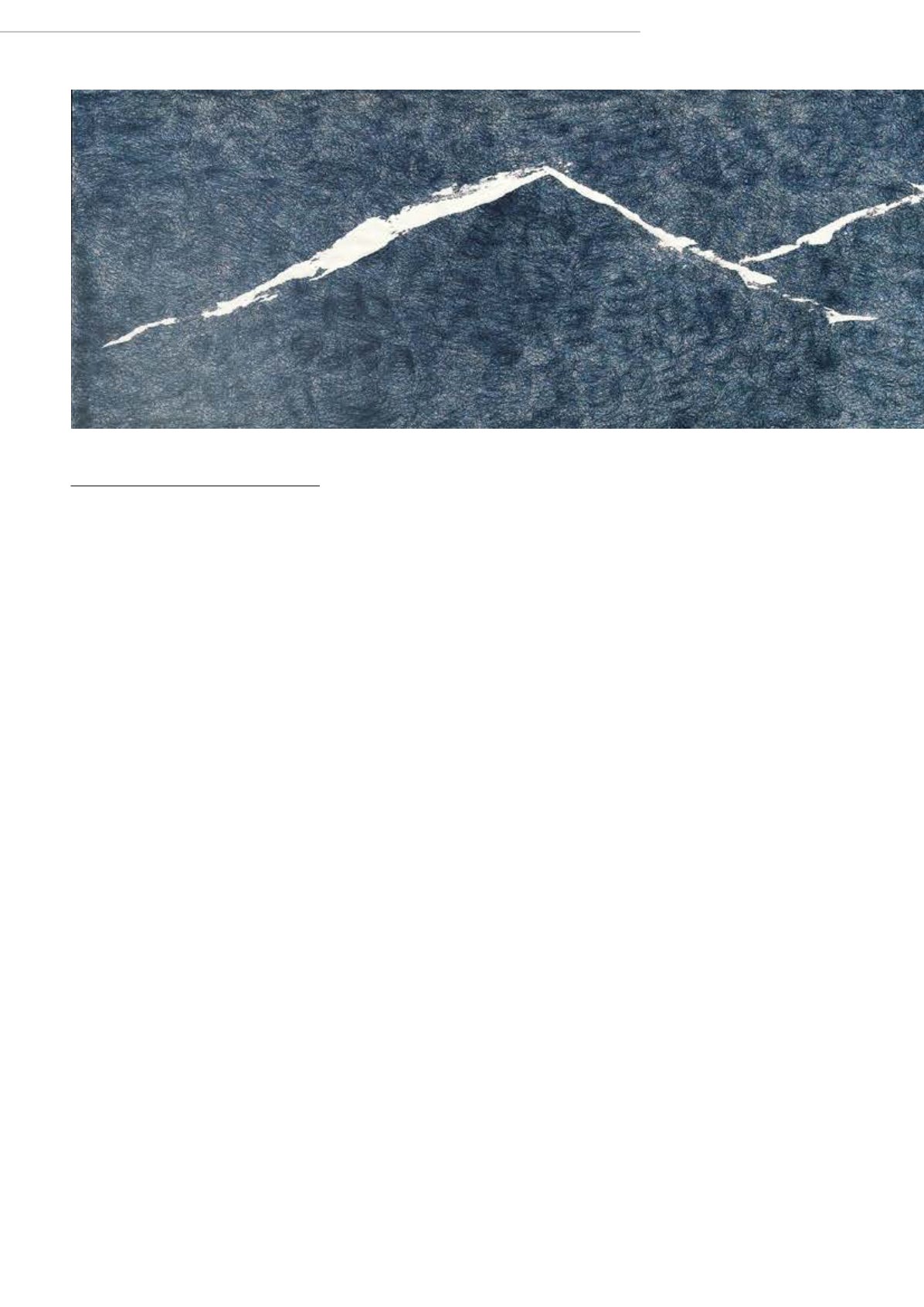

| 56
PostWar & Contemporary
3452*
JAN FABRE(Antwerp 1958 - lives and works in Ant-
werp)
SnowMountains. 1989.
Ballpoint pen on paper with perforated
right margin.
61 x 282.5 cm.
The authenticity has been confirmed by
Angelos bvba / Jan Fabre, Antwerp, May
2015.
Provenance:
- Acquired fromGalerie Campo, Antwerp,
by the present owner in 2000
- Since then privately owned, Netherlands.
Exhibition: Sint-Niklaas 1992. „Li jn“, 17
May - 28 June (with the Label on the
reverse).
Jan Fabre, the painter, director, choreo-
grapher and playwright fromAntwerp,
has already as a young man produced a
great body of work. The individual works
themselves are often „monumental“ - in
size, lavishness and in the sheer „work“
involved in making them. In his art we see a
combination of unbelievable energy, great
physical exertion, as well as persistence.
Physical work is a central aspect of his
way of working, as are transient situations
and intervening states or moments. He
works mostly at night and reaches the high
point of his creativity between night and
day, that intervening state - the so-called
“twilight hour” of the dawn. It is for him a
special phase „when the nocturnal animals
go to sleep and the diurnal animals awa-
ken, there is a moment of sublime stillness
in nature, in which everything is torn open,
breaks open and alters. I have sought this
moment and captured it. „ (cit.: Jan Fabre
imGespräch mit Jan Hoet und Hugo de
Greef, Exh. Cat.: Jan Fabre. Der Leimru-
tenmann, Stuttgart 1995, p. 26.).
Such transient situations are also recognis-
able in his works. When he paints his “Blaue
Bilder” (blue paintings) - his gigantic BIC
works, where he scrawls over entire sur-
faces of paper with blue BIC ball point pens,
he portrays himself in a trance-like state.
The pen is like an extension of his hand; the
hand of his arm, and his armof his whole
body. The endless blue lines, drawn tightly
over one another, arise during this endless
moment, where thought stops and theme-
chanics of the body allow him to ‘disappear’
into his work. Already he has “BIC-ed” entire
rooms, even castle Tivoli was immersed
in blue with his scribbled strips of paper in
1990. BIC blue „is a very calmcolour. Yet
the way in which I apply it is very noisy. With
time, however, and through repetition, it be-
comes calmagain. Quiet – so that you can
hear the picture. I try to give the stillness a
formwith all its sounds.“ (cit.: Jan Fabre in:
Exh. Cat.: Jan Fabre, Basel 1990).
That precisely this „Blue BIC painting,“ with
its cheap ball point pens, has brought him
fame, considering the exceptional position
of the colour blue in art history – from
Giotto‘s precious lapis lazuli blue, to Yves
Klein‘s IKB blue - appears to amuse him.
Doodling, which people do unconsciously
on paper, is an expression of absence for
him, when one constantly scribbles while
on the telephone, while waiting, thinking,
or out of nervousness. These traces of
absence are what Fabre brings to a large
surface: he allows himself to be guided by
the lines, without painting exact forms or
motifs, the lines lead the way. At the same
time, these blue surfaces are witness to
the presence of a person, of his physical
body. In the endless repetition of the
lines, there are traces of breathing, of the
movement of the body and the physical
presence is palpable.
This is presence and absence in one; an
indissoluble tension and dialectic which
drives and fascinates Fabre. He himself
describes the works as a kind of self-hyp-
nosis. „There are moments which I could
summarise as follows: I do nothing con-
sciously, my thoughts are not coherent,
I amwaiting for nothing, and everything
happens of its own accord. My head spins,
and my ear does its work. The limits are set
aside. I fly around and through the drawing,
below, over and in it. „ (cit.: Jan Fabre im
Gespräch mit Jan Hoet und Hugo de
Greef, Ausst.Kat.: Jan Fabre. Der Leimru-
tenmann, Stuttgart 1995, p. 174.)
CHF 25 000 / 35 000
(€ 23 150 / 32 410)


















